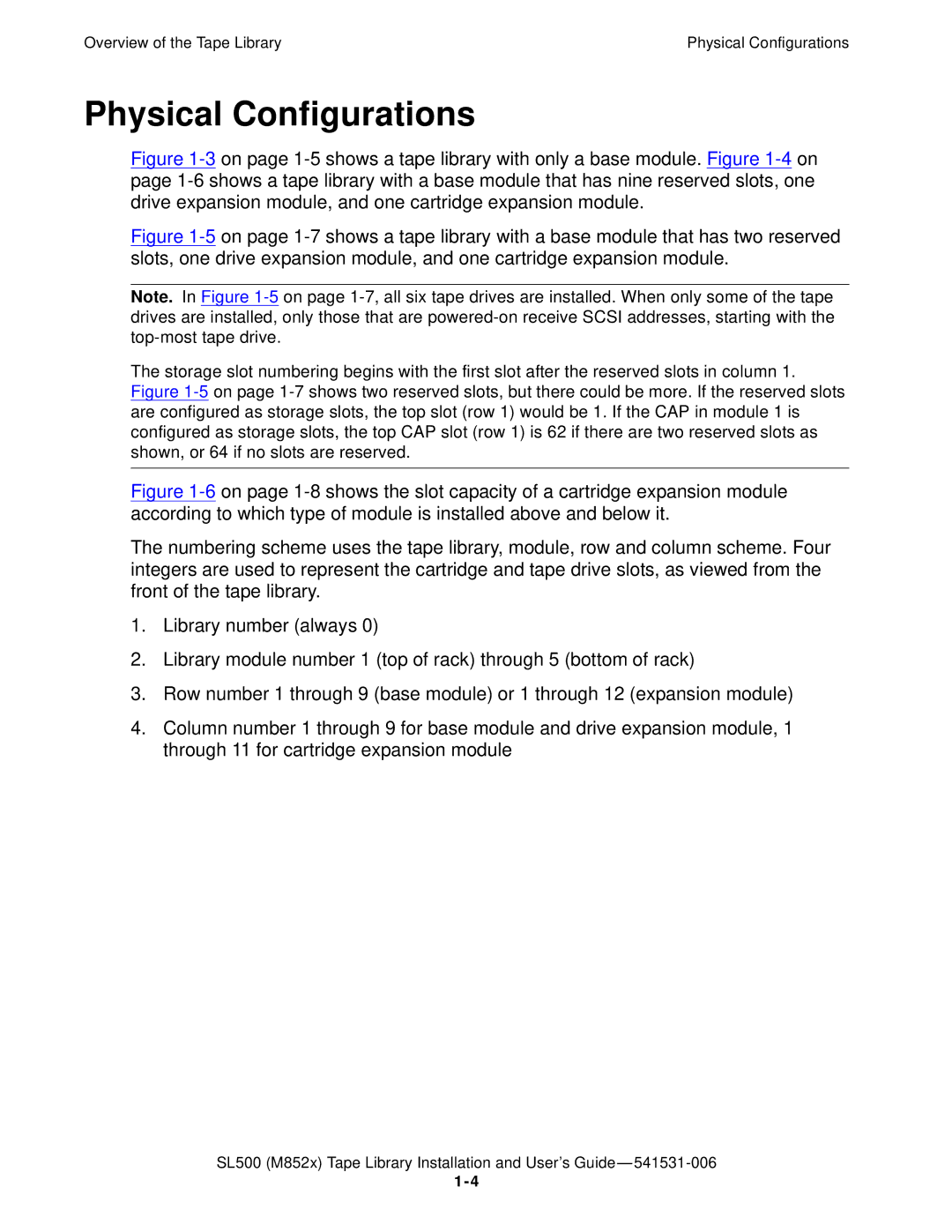
Overview of the Tape Library | Physical Configurations |
Physical Configurations
Figure 1-3 on page 1-5 shows a tape library with only a base module. Figure 1-4 on page 1-6 shows a tape library with a base module that has nine reserved slots, one drive expansion module, and one cartridge expansion module.
Figure 1-5 on page 1-7 shows a tape library with a base module that has two reserved slots, one drive expansion module, and one cartridge expansion module.
Note. In Figure
The storage slot numbering begins with the first slot after the reserved slots in column 1. Figure
Figure 1-6 on page 1-8 shows the slot capacity of a cartridge expansion module according to which type of module is installed above and below it.
The numbering scheme uses the tape library, module, row and column scheme. Four integers are used to represent the cartridge and tape drive slots, as viewed from the front of the tape library.
1.Library number (always 0)
2.Library module number 1 (top of rack) through 5 (bottom of rack)
3.Row number 1 through 9 (base module) or 1 through 12 (expansion module)
4.Column number 1 through 9 for base module and drive expansion module, 1 through 11 for cartridge expansion module
SL500 (M852x) Tape Library Installation and User’s
